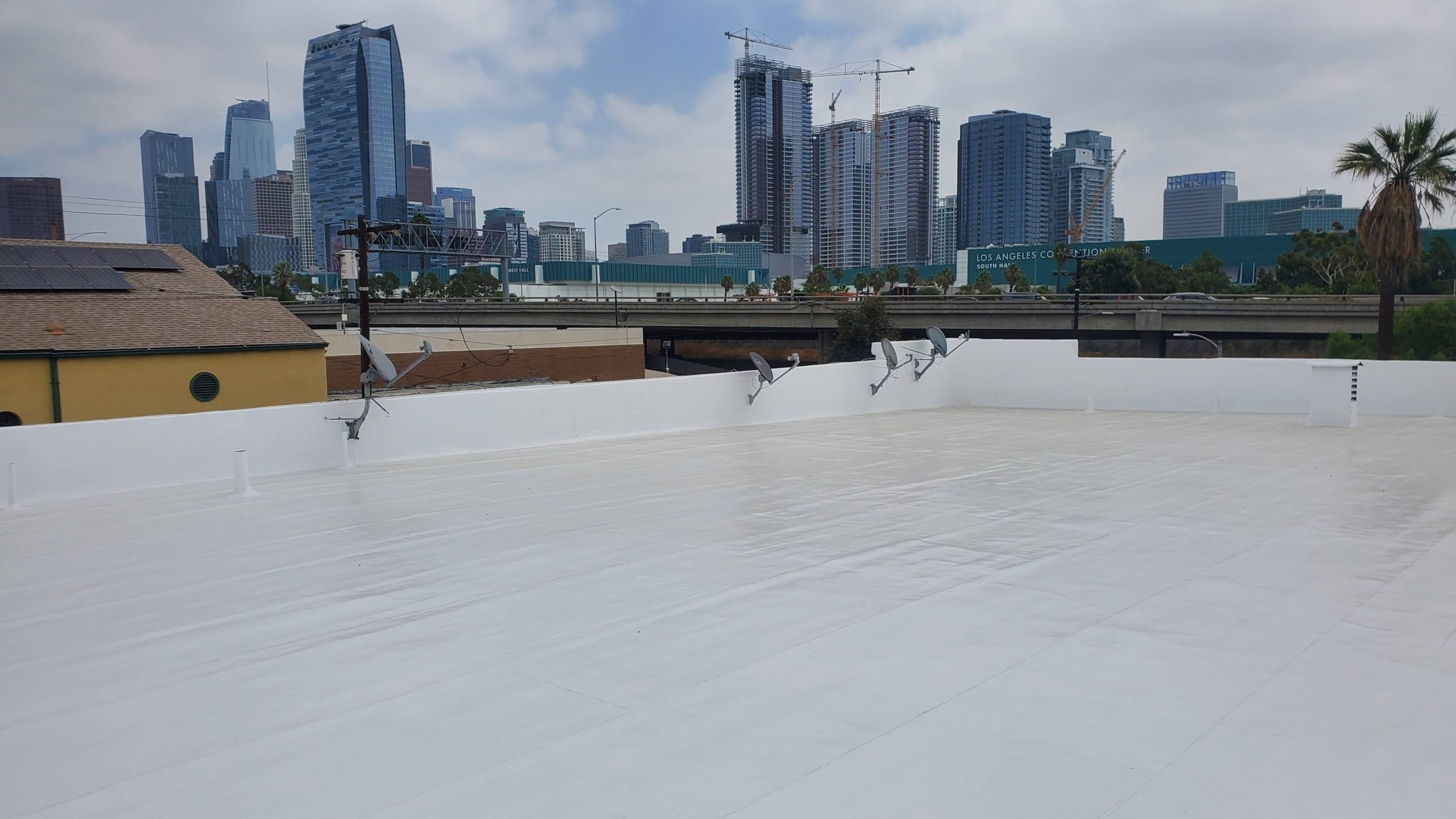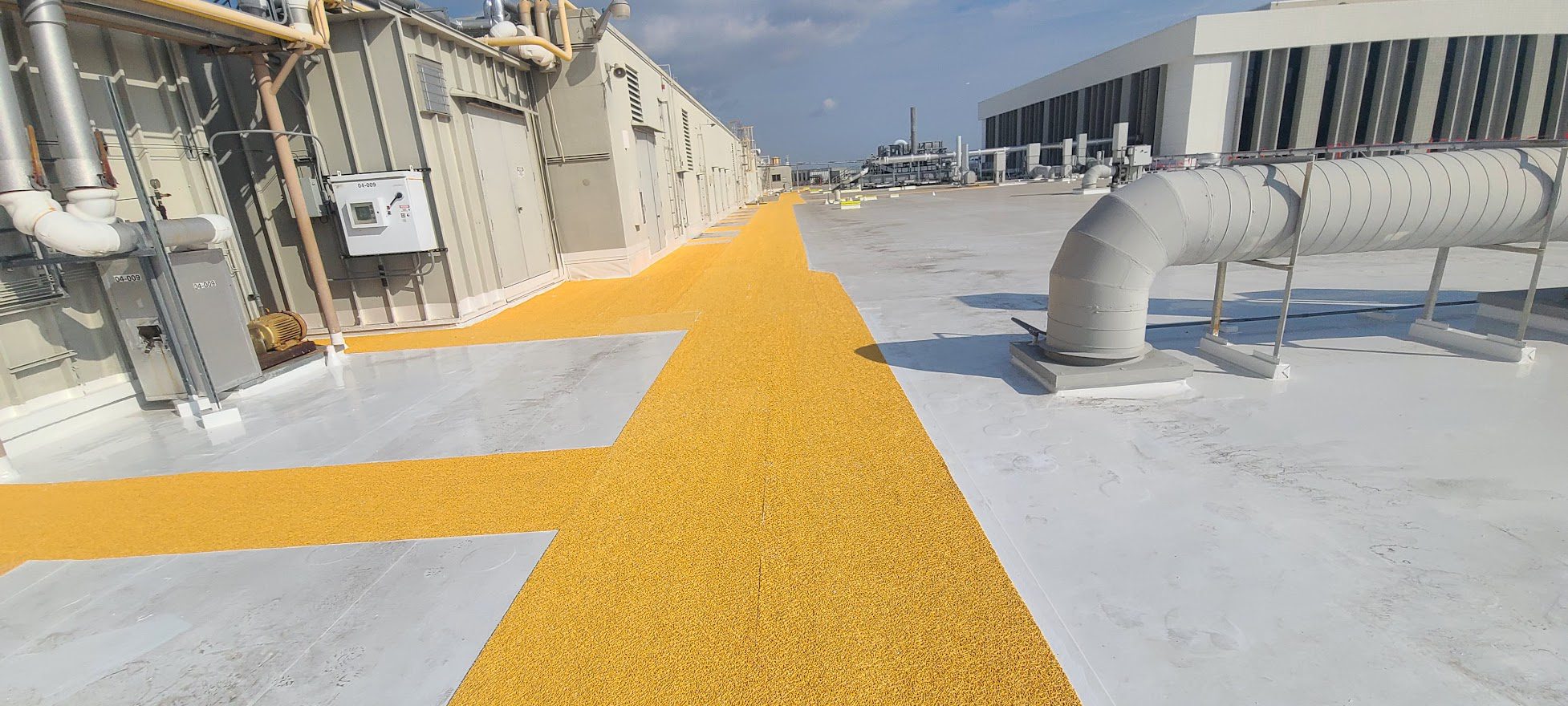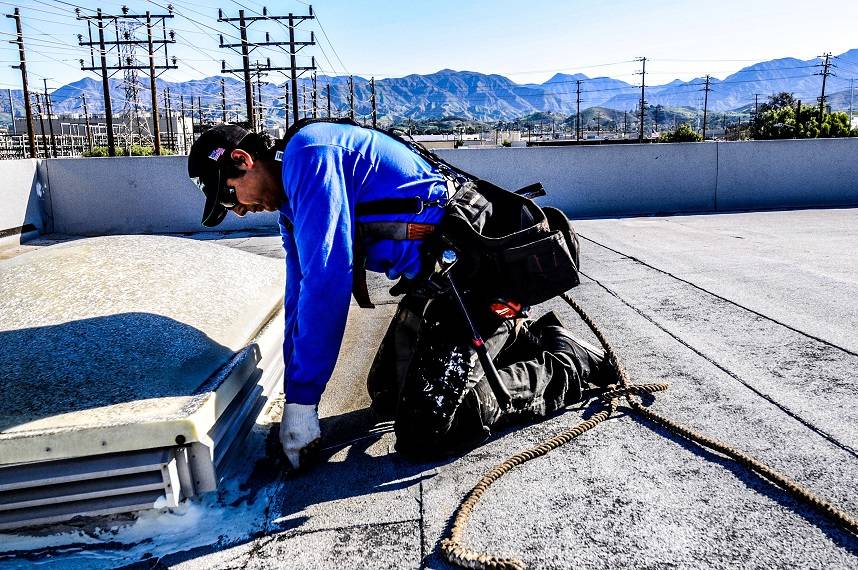Silicone Roof Coatings are widely used by owners of commercial and industrial buildings, like multifamily homes, hotels, apartment complexes, and even government buildings and churches. It is used for the protection of the most essential protective layer of their property: their roof. While researching your roofing options, you might have heard of cool roof coatings and how it’s an optimal choice for commercial buildings.
Probably the most prominent commercial cool roof coating in the market today is Silicone Roof Coatings. Silicone roof coatings are a great way to improve the look and performance of your roof, but there are also some pros and cons to consider before making a decision.
Keep reading for more information! Central Roofing is here to provide you with a bit of trusted information and help you understand if silicone is your best option for your property.
Silicone Roof Coatings Pros:
Resistance to Ponding Water
Hopping right into the great things about silicone roof coatings is its resistance to ponding water. Silicone coatings being made with a moisture-cured material (meaning after the silicone cures, water will no longer be absorbed) will not break down due to ponding water, but instead will let the water dry out. This makes silicone roof coatings a great choice for flat roofs, hence why so many commercial buildings install silicone roof coating systems on their roofs. However, just because it resists ponding water doesn’t mean there is no need for drainage, you still need a great drainage system no water what type of roof you have.
U.V Protection
Silicone roof coatings can reflect up to 80-90% of the sun’s harmful UV rays which is why they are considered “cool” roofs. This means facility managers and property owners can save thousands of dollars by cutting their facility’s cooling costs during the warm summer months and reducing the HVAC system workloads.
Minimizing the sun’s impact on the roof not only helps sustain lower energy costs but also reduces internal building temperatures and prolongs roof life by reflecting the sun’s u.v rays it lessens the sun’s damage to your roof. You can learn more about cool roofs as well cool roof rebates here.
Flexibility & Weatherability
Silicone roof coatings create a highly flexible, monolithic, and impermeable membrane capable of withstanding wind-driven sand, oxidation, and extreme temperatures. They are also able to endure the natural expansion and contraction (thermal movement) that occurs in large roof structures.
High Solids Content
Most modern silicone coating formulations have a high-solids content that typically exceeds 90%. This means less coating material is needed during application to achieve the desired dry mil thickness. The ability to apply more coating in a single pass helps save on time and labor costs without compromising workmanship and system integrity.
Environmentally Safe
While all silicone coatings are considered to be environmentally friendly, high-solids formulations, specifically, are the best in this regard. Most of today’s high-solid silicone roof coatings are solvent-free and contain extremely low volatile organic compounds (VOCs). Most also meet and exceed all state-regulated material safety standards, meaning they are safe for use in all 50 states.
Silicone Roof Coating Cons
For all the great things about silicone roofing, it’s not without its downsides.
Gets Dirty
Silicone coatings easily attract dirt and other airborne dust particles. Over time, this accumulation of dirt and dust on the roof surface causes the system to slowly lose its reflective properties. This gradual build-up makes the roof more susceptible to heat from the sun, which negatively impacts cooling costs and internal building temperatures.
Which makes power washing and overall maintenance to your cool roof vital to prolong its best benefits. With that being said we highly recommend getting your roof professionally maintained at least twice a year. It’s a relatively low cost to the savings you’ll have for having an optimized silicone roof coating system.
Very Slippery
Silicone coatings make surfaces very slippery! If foot traffic is expected, Walkpads are essential to walking the roof safely.
Conclusion
All in all, silicone roof coatings are a great way to improve the look and performance of your roof. They can be applied relatively easily and should last for many years with proper maintenance. There are a few things you should keep in mind before deciding if this is the right solution for you, but overall I think it’s a great option worth considering. Have you ever used a silicone roof coating? What was your experience like? Let me know in the comments below!



